How to Dispose of Damaged Rigging Gear, Wire Rope, & Slings
Because there are no standards or clear instructions developed by industry authorities like OSHA, ANSI, WSTDA, or AWRF, we have outlined what we suggest to be best practices for the disposal of damaged or failed lifting materials.
With no clear industry-wide rules on retiring or destroying damaged or failed rigging hardware and slings, permanent disposal is typically left up to the owner or end-user. This can become problematic, as a damaged or failed piece of rigging equipment needs to be removed from service, quarantined, and be rendered useless so that it will never be used to perform a lift again.
Government agencies and larger projects will typically require destruction of any damaged rigging, while independent contractors and end users will simply throw the “failed gear” into a scrap heap or dumpster.
It should be noted that OSHA, ANSI, WSTDA, AWRF or other professional organizations DO NOT provide clear direction on what to do with this type of material once it has been effectively removed from service.
As a company that offers inspection and repair services for rigging gear, we often accept damaged rigging gear into our facilities for inspection and are subsequently tasked with disposing of the material if we determine that it cannot be repaired. Because of this, we have put together the following suggested best practices to render the items in question as unsalvageable, or in such a condition as to make further use impossible.
Disposal of Damaged or Failed Wire Rope and Wire Rope Slings
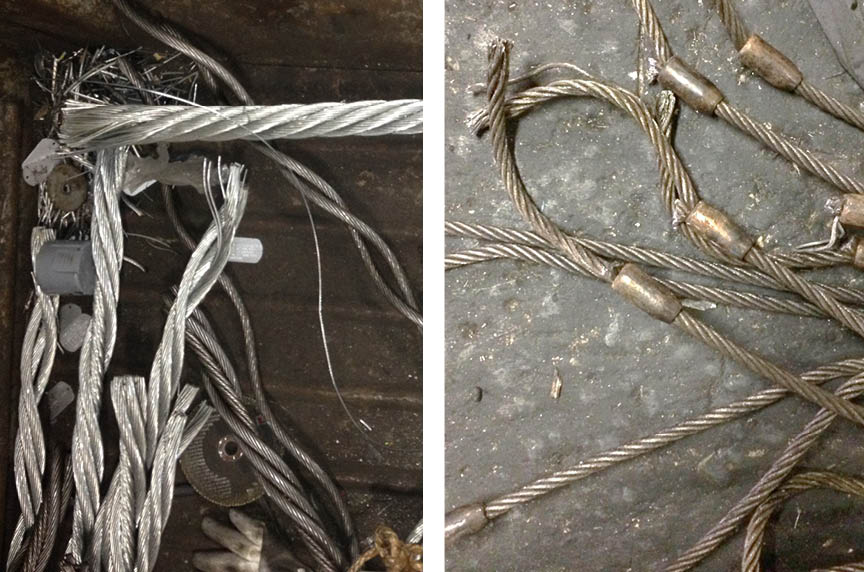
Many operating conditions can affect the life of wire rope. Bending, stresses, loading conditions, speed of load application (shock load), abrasion, corrosion, sling design, materials handled, environmental conditions (heat or chemical exposure), lubrication, and history of usage will all factor into how long wire rope can stay in service.
If during the course of an inspection any of the following damages are observed, it could indicate that the wire rope or sling is unsafe and needs to be discarded:
- Severe corrosion
- Localized wear on the outside (look for shiny worn spots)
- A one-third reduction in outer wire diameter
- Damage or displacement of end-fittings—including hooks and latches, rings, or links—by overload or misapplication
- Distortion, kinking, bird caging, or other evidence of damage to the wire rope structure
- Excessive broken wires
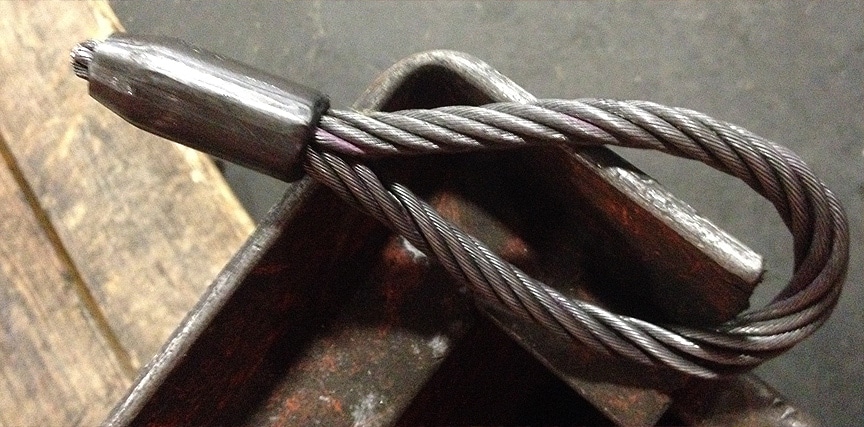
If it’s determined that the wire rope will be removed from service, we suggest cutting it down into more manageable sizes before discarding. This extra effort will help to accommodate the needs of most recycling facilities that will accept the damaged wire rope and also help to make sure that it cannot be used any further. Keep the following in mind when disposing of wire rope slings and wire rope cable:
- Cut into approximately 3’ to 4’ sections
- Cut, or destroy, the eyes of the wire rope sling to prevent any further use of the sling
- If the sling body is long enough to allow for an eye to be reformed by other means, the wire should be cut down to shorter lengths
- Use proper PPE when handling the pieces of cut wire—cut or frayed ends of the wire rope will be sharp
- Remove, or separate, any tags and labels from the sling
- Place scrap into your facility’s metal recycling bins and coordinate pickup or delivery
Disposal of Damaged or Failed Alloy Chain Slings
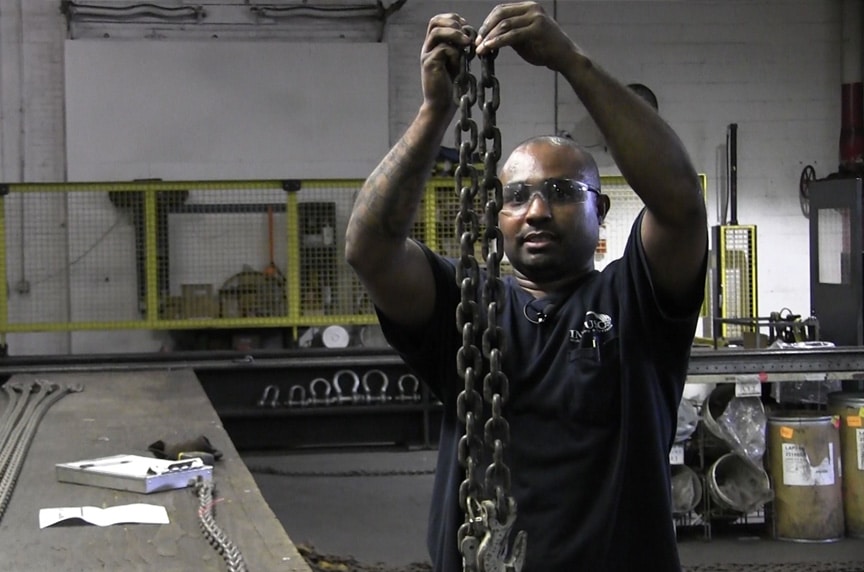
While chain slings are ideal for lifting applications because of their strength, they’re still susceptible to being damaged to the point where they are no longer safe to keep in operation. Environmental factors, such as exposure to extreme heat or chemicals, wear beyond specified tolerances, stretching, kinks or binding, and nicks or gouges in the links, can all be criteria for removal from service. Any of these factors can weaken chain slings and may increase the potential for an accident.
As with wire rope slings, if the chain slings and assemblies are rejected during inspection due to damage or failure, they need to be quarantined and removed from service. We suggest taking the following actions to help make sure that the chain sling can’t be re-purposed into some type of usable assembly:
- Cut into smaller 3’ to 4’ sections to prevent use of any salvageable lengths of chain
- Cut off master links and sling hooks
- Use proper PPE when handling pieces of cut chain—cutting can leave sharp edges and metal burrs
- Remove, or separate, any tags and labels
- Place scrap into your facility’s metal recycling bins and coordinate pickup or delivery
Disposal of Damaged or Failed Synthetic Web Slings
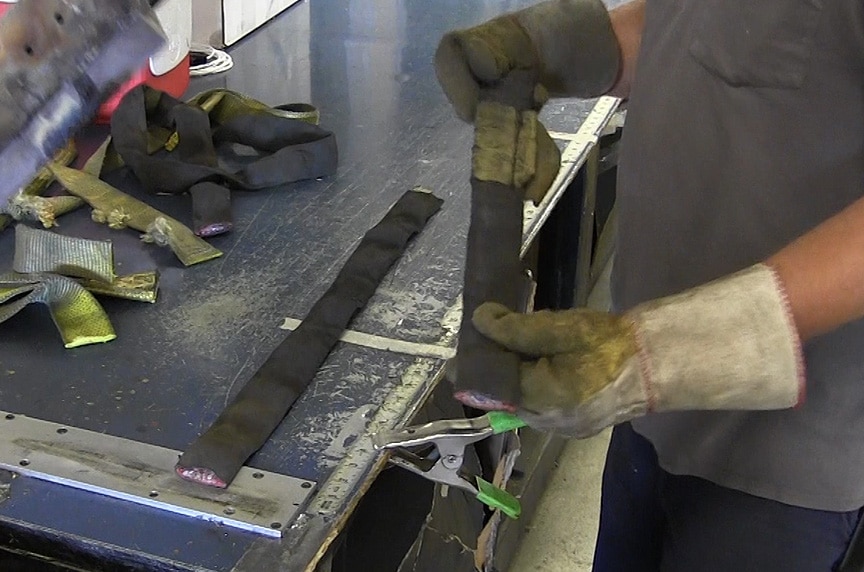
Nylon or polyester web slings are strong enough to handle many different lifting applications, but also have the benefit of being soft and flexible to handle all types of loads—including expensive loads, highly finished parts, fragile parts, and delicate equipment. While a web sling has a higher resistance to mildew, rot, some chemicals, and abrasion—they can still be damaged to the point where they need to be removed from service. If during any point of the inspection the following is observed, the web sling should be removed from service and discarded:
- Acid or caustic burns
- Melting or charring of any part of the surface
- Snags, punctures, tears, or cuts
- Broken or worn stitching
- Wear or elongation exceeding the manufacturer’s recommendation
- Distortion of fittings
When disposing of a web sling, cutting the eye in most circumstances will render the sling as unusable. However, as noted previously—when the sling body is long enough, the webbing should be cut into shorter sections, and the sling should be disposed of as general waste or trash. Keep the following in mind when disposing of web slings:
- Cutting, or destroying, of the eyes prevents any further use of the sling
- As an additional step, if the sling body is long enough to allow for an eye to be reformed by other means, the sling should be cut in to shorter lengths of 3’ to 4’.
- Best practice is to remove, cut, or separate any tags or labels from the sling
- Place scrap into your facility’s recycling bins
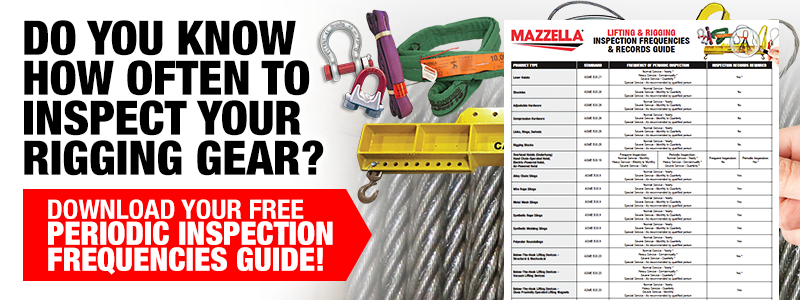
Disposal of Damaged or Failed Synthetic Roundslings
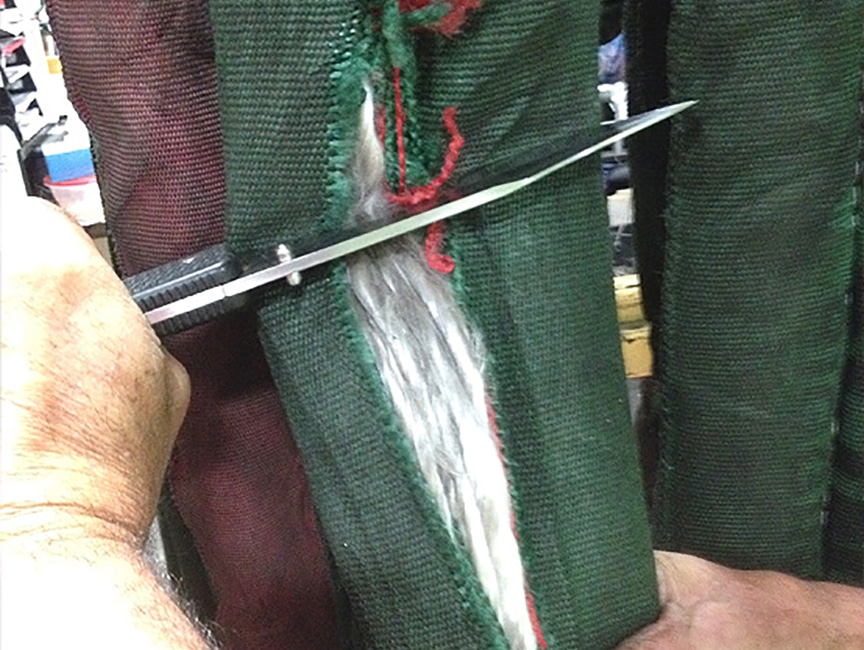
A synthetic roundsling is strong, flexible, and pliable—allowing it to adjust to and tighten around loads better than some other types of slings. Roundslings are an economical option that are versatile and can be used in a variety of hitches including vertical, choker, or basket—so they can be used in many different types of applications. Another benefit is that they have a jacket that provides an added level of protection to the inner load-bearing fibers.
When performing a roundsling inspection, you’ll want to identify a potential issue and take action on it before the sling is connected to any rigging hardware. A small cut, burn, tear, or hole in a synthetic roundsling can compromise the strength and lifting capabilities of the sling when under load and therefore the sling must be removed from service immediately. Look for the following signs of excessive wear or damage:
- Acid or caustic burns
- Evidence of heat damage
- Holes, tears, cuts, abrasive wear, or snags that expose the core yarns
- Broken or damaged core yarns
- Weld splatter that exposes core yarns
- Discoloration or brittle or stiff areas which may indicate chemical damage or prolonged UV exposure
- Distortion or damage to the fittings
If it is determined that a roundsling meets the removal from service criteria, then the following actions need to be taken to discard and render the sling unusable:
- The standard endless configuration of a round sling typically allows for destruction by cutting the body in half
- If the sling has been braided or configured to form an eye on each end, then the eyes should be cut to make them unusable
- Best practice is to remove, cut, or separate any tags and labels from the sling
- Place scrap into your facility’s recycling bins
Disposal of Damaged Rigging Hardware
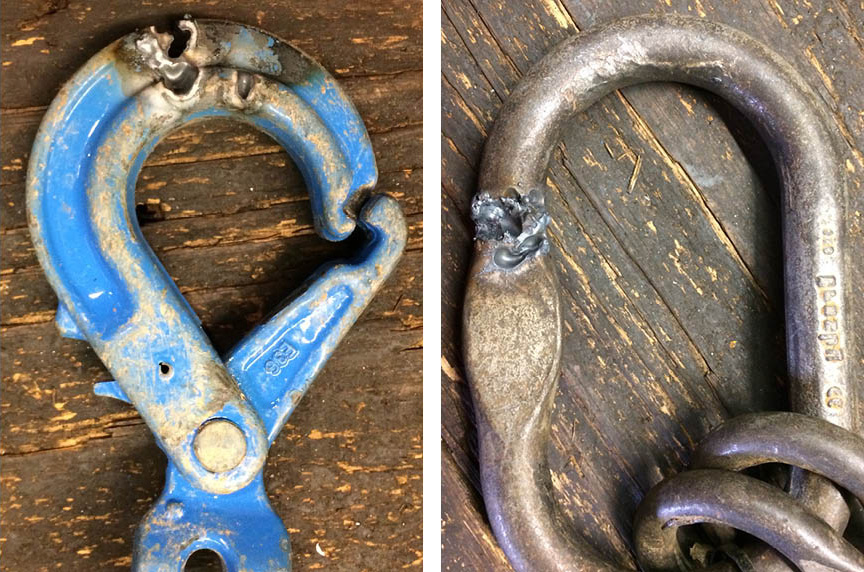
Rigging hardware used for lifting purposes includes: shackles, links, rings, swivels, turnbuckles, eyebolts, hoist rings, wire rope clips, wedge sockets, and rigging blocks. Prior to each shift, or change in lifting application, a visual inspection of the rigging hardware shall be performed. The purpose of this inspection is to identify any hazards that may affect the integrity of the hardware and safety of the lift, including:
- Bent, twisted, distorted, stretched, elongated, cracked, or broken load-bearing components
- 10% or more reduction of the original dimension
- Excessive nicks, gouges, pitting, or corrosion
- Indications of heat damage including weld splatter or arc strikes
- Loose or missing nuts, bolts, cotter pins, snap rings, or other fasteners or retaining devices
- Missing or illegible rated load identification
As with all types of slings, destruction of the damaged hardware so that it cannot be re-purposed, is the most effective way of disposal. This can be accomplished by:
- Torch cutting, or by use of an abrasive chop saw
- When possible, remove and separate pins and/or latches
- Remove or separate any tags and labels
- Place scrap into your facility’s metal recycling bins and coordinate for pickup or delivery
Wrapping it Up
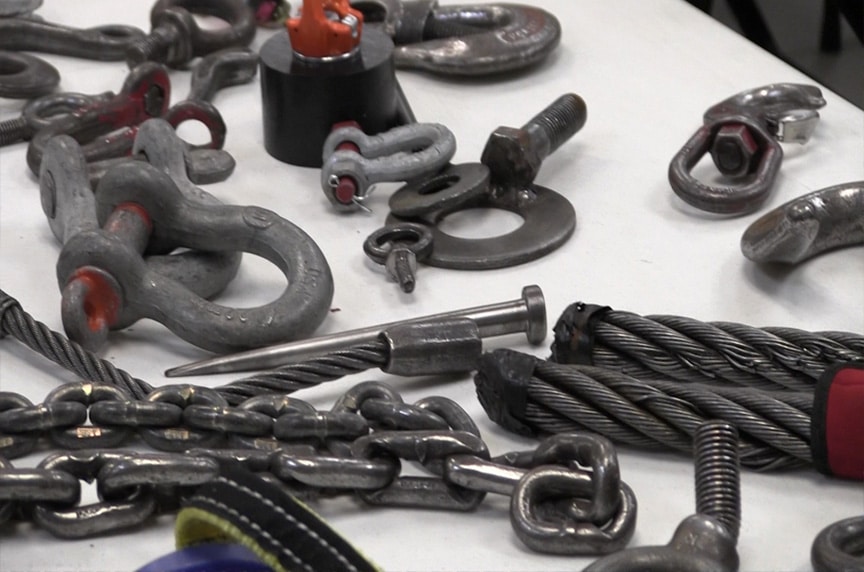
When it comes to the disposal of rigging hardware, wire rope, or slings, the best practice is to render the items in question as unsalvageable, or in such a condition as to make further use impossible.
Because there are no standards or clear instructions developed by industry authorities like OSHA, ANSI, WSTDA, or AWRF for the disposal of damaged or failed lifting materials, we have outlined what we suggest to be best practices. Keep the following things in mind, when disposing of lifting and rigging gear:
- Only scrap slings if you have been trained, and are authorized to do so, by your employer
- Use caution when operating saws or torches and use proper PPE when handling cut pieces of wire rope, chain, or hardware
- Wire rope, chains, and synthetic slings need to be cut into 3’ to 4’ lengths before being disposed of, so that they cannot be salvaged or re-purposed. Also, cut or destroy any eyes on the ends of slings.
- It is recommended that all tags and labels be removed from any sling or hardware before being scrapped
- When possible, remove and separate pins and/or latches on any lifting hardware
- Synthetic slings can typically be disposed of as general waste or trash and can, in most areas, be introduced into the waste stream
At Mazzella, we offer a sling inspection and repair program. If you’re unsure whether the gear you’re using is still in proper working condition, or whether it needs to be removed from service, we have highly trained and qualified personnel that can come on-site and perform a field inspection that complies with OSHA and ASME standards.
We also offer pick-up and delivery services where we’ll come to your facility, take your lifting gear, and bring it back to our facility where it will be inspected and then repaired and tested, if possible. Our factory-trained technicians are available 24/7 to perform emergency repairs, or perform authorized warranty repairs, on slings and other lifting equipment.
If you’re looking for help with inspection, testing, or tagging of any of your slings, or need guidance on how to develop your own in-house compliance program, contact a Lifting Specialist today.
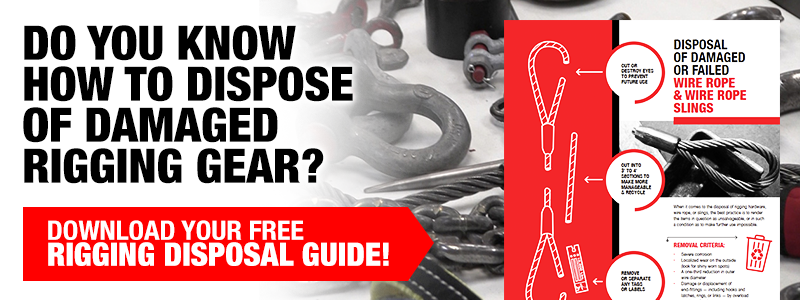

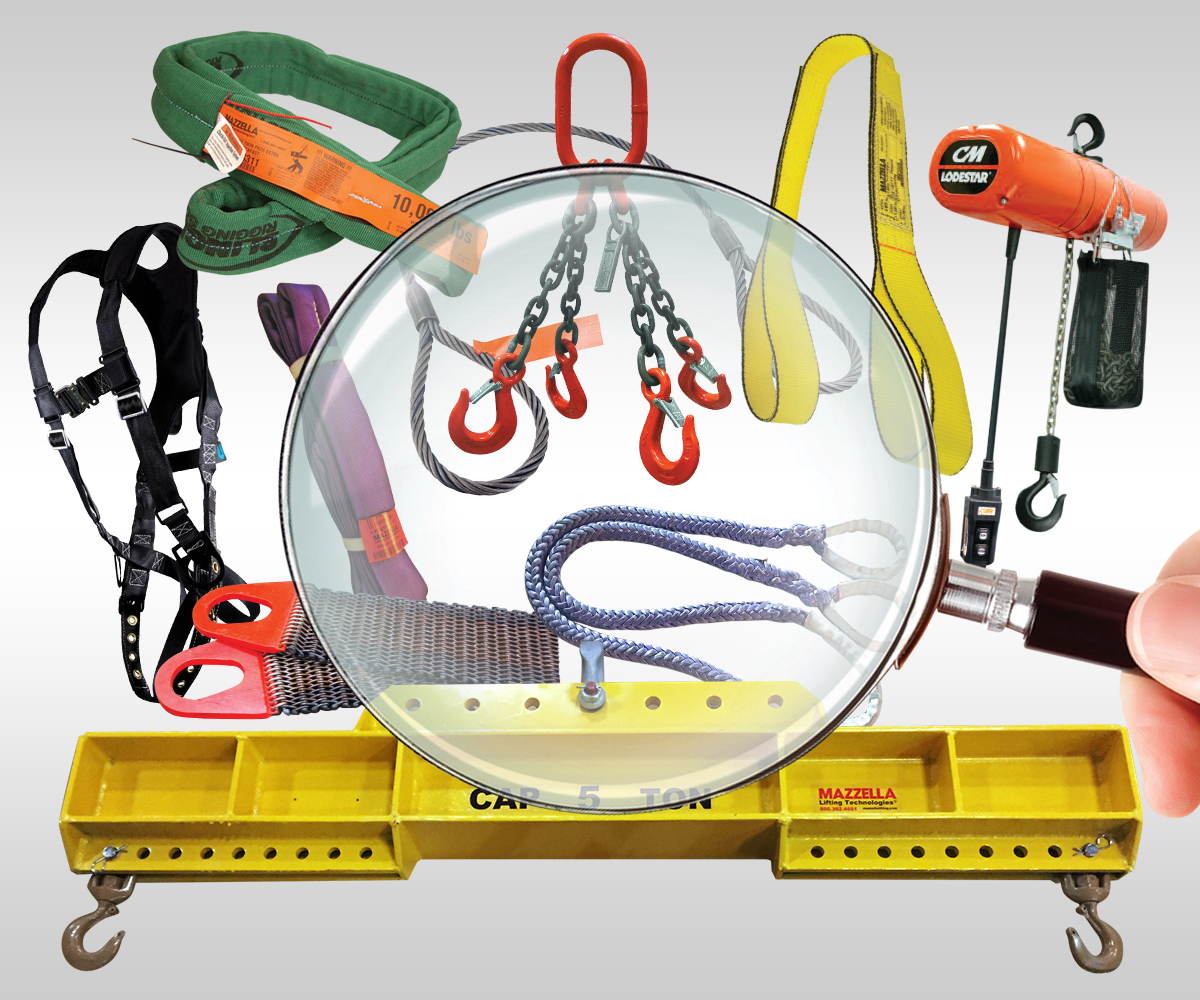
Rigging Inspection Services
OSHA 1910.184, ASME B30.9, B30.20, B30.26, & ANSI Z359 require periodic, documented inspections on slings, rigging hardware, lifting devices, and fall protection every 12 months, at minimum, and monthly to quarterly in more severe service conditions.
Call us at 800.362.4601 or click here if you need inspections for slings, rigging hardware, lifting devices, or fall protection!
Copyright 2017. Mazzella Companies.
